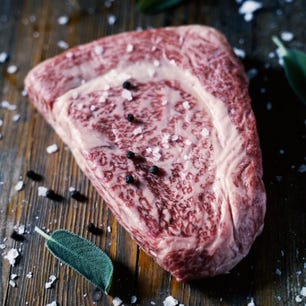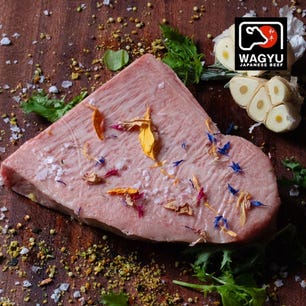Gourmet Japanese Food
TYPES OF GOURMET FOOD
A gastronomic adventure in gourmet Japanese cuisine
Japanese gourmet cuisine is based on the use of high-quality ingredients and the careful presentation of dishes. Japanese food culture is known for its attention to detail and the freshness of the ingredients used, as well as the variety of dishes and their impressive presentation.
Typical Japanese food has a long and rich history dating back thousands of years. Initially, Japanese cuisine was influenced by Chinese and Korean cuisine, but over time it developed its own culinary style and identity. One of the main factors that influenced Japanese cuisine is the geographical isolation of the Japanese archipelago, which led to the development of food preservation techniques such as marinated raw fish (sashimi) and sour rice (sushi).
It should not be underestimated how Japanese cuisine has been influenced by religion and culture, particularly Shintoism and Buddhism, which encouraged the use of natural and seasonal ingredients. Over the years, Japanese cuisine has evolved and divided into several regional specialties, including kaiseki cuisine, tempura cuisine, and teppanyaki cuisine. Today, gourmet Japanese cuisine is recognized worldwide for its sophistication and the cultural aspects it still manages to tell through food.
If you are looking for a unique and delicious dish, you must try wagyu meat, a high-quality Japanese beef that is famous for its enviable marbling and unmistakable flavor.




Japanese gourmet dishes: the best of the culinary art of the Rising Sun
Japanese cuisine has become very popular around the world in recent decades due to its variety, aesthetics, and distinctive flavors. This Asian cuisine offers a wide range of delicious dishes, with some of the most iconic dishes that have become very famous around the world. One of the main reasons why Japanese cuisine is so popular is because it is very balanced and healthy, with great attention to detail and freshness of ingredients. Among Japanese gourmet dishes, there are some that represent the best of Japanese culinary culture.
- Sushi: Sushi is probably the most famous and beloved Japanese dish in the world, characterized by the use of flavored rice and raw or cooked fish, accompanied by a variety of toppings and sauces. Sushi can be served in a variety of ways, including nigiri sushi, maki sushi, and uramaki sushi. Sushi is often served with wasabi and soy sauce.
- Ramen: Ramen is a wheat noodle soup that can be served with meat or vegetable broth, accompanied by pork, chicken, eggs, and a variety of vegetables and spices. Today, ramen has become an iconic dish in Japanese culinary culture.
- Tempura: Tempura is a batter-fried dish of shrimp, vegetables or meat, often served as an appetizer or side dish. Tempura can be fried in various oils, including soybean oil, sesame oil, and peanut oil. Tempura is often served with a sauce made from dashi, soy sauce and mirin.
- Tamagoyaki: Tamagoyaki is an egg dish, a kind of omelet. The main ingredients of tamagoyaki are eggs, sugar, soy sauce, and dashi, a Japanese fish-based broth. This is a popular dish in Japanese culture and represents the perfect balance between sweetness and savory.


Technique and tradition in Japanese gourmet dishes
Japanese gourmet cuisine is one of the finest and most appreciated in the world, thanks to its ability to combine flavors, aesthetics and culture. The pillars on which this cuisine is based are closely related to the history and culture of Japan, and represent the philosophy that guides the preparation of dishes.
One of the main pillars of Japanese cuisine is the freshness of ingredients. Japanese tradition calls for the use of seasonal products, carefully chosen to ensure maximum freshness.
Another pillar of Japanese cuisine is the aesthetics of food. The presentation of a dish is considered as important as the flavor. Japanese cooks pay close attention to the arrangement of food, the choice of colors, and the shape of the dish. In addition, the Japanese place great importance on the natural beauty of ingredients; for example, vegetables are often cut in a way that highlights their original shape.
A third pillar of Japanese cuisine is preparation technique. Gourmet Japanese cuisine involves great attention to detail and care in the preparation of food. Most dishes involve quick cooking so as to preserve the original taste of the ingredients. In addition, the technique of cutting fish and meat is very important to ensure perfect texture and flavor.
Finally, another key aspect of gourmet Japanese cuisine is respect for tradition and culture. Many of the preparation and presentation techniques have been passed down from generation to generation and have become an essential part of Japanese culture. In addition, many gourmet Japanese restaurants strictly follow the traditions of Japanese cuisine and offer a true cultural experience for their guests.


Basic ingredients of Japanese cuisine
Authentic Japanese cuisine is one of the richest and most varied cuisines in the world. It is a traditional cuisine that dates back many centuries and is still popular, consisting of a diet of fish, rice, vegetables, and seaweed, but it also boasts more elaborate dishes that include meat and fruit and ethnic products. One of the basic ingredients of Japanese cuisine is sushi rice, a type of short-grain rice that is used to create the famous sushi rolls. Sushi rice has a soft, sticky texture, making it perfect for shaping into different shapes. Soy sauce is another key ingredient in Japanese cuisine, used to season various dishes, from sushi to grilled meats. Soy sauce is made by fermenting soybeans, wheat, salt, and water, and has a salty, intense flavor. Wasabi is a spicy root used to season sushi and other Japanese dishes; it has a spicy, intense flavor that adds a lively note to dishes. Miso is a fermented soybean paste that is used to make soups, sauces, and marinate meat; it has a salty, intense flavor that goes well with the sweet taste of udon. Udon are thick, soft Japanese noodles made from wheat flour, water and salt; they make a perfect base for soups and stews, and can be accompanied by vegetables, meat, fish and tofu.
Discover the products
Longino & Cardenal
Longino & Cardenal stands today as one of Italy's leading "food globetrotters." With passion and courage it carries out a continuous search for the best raw materials, often little known to most, in order to meet the new trends in consumer behavior that seek excellent products proposed in innovative forms. All our deliveries use specialized, refrigerated couriers.












